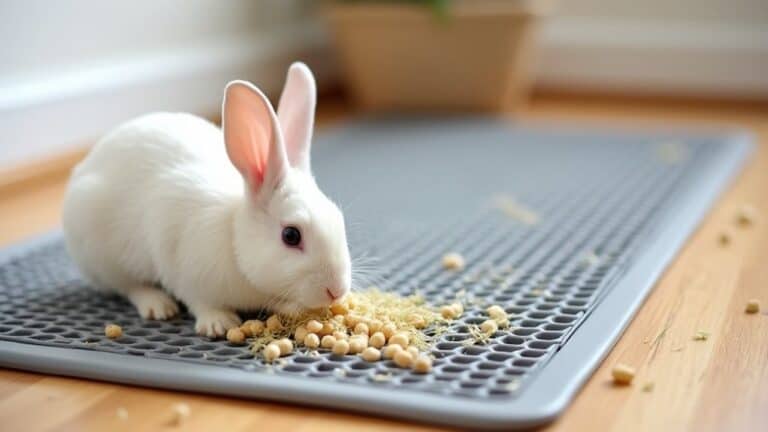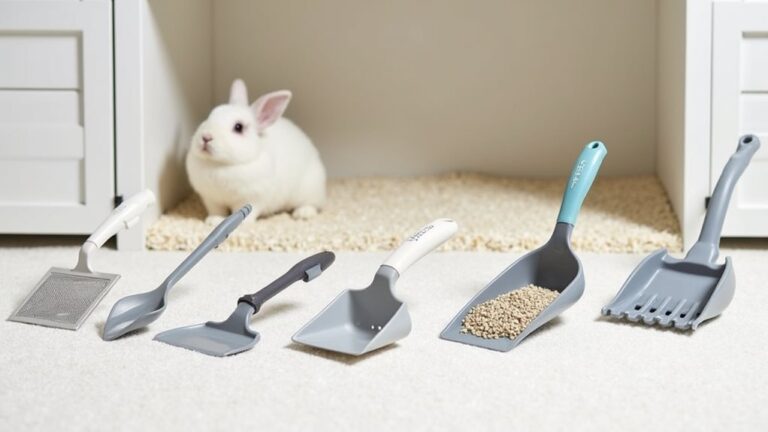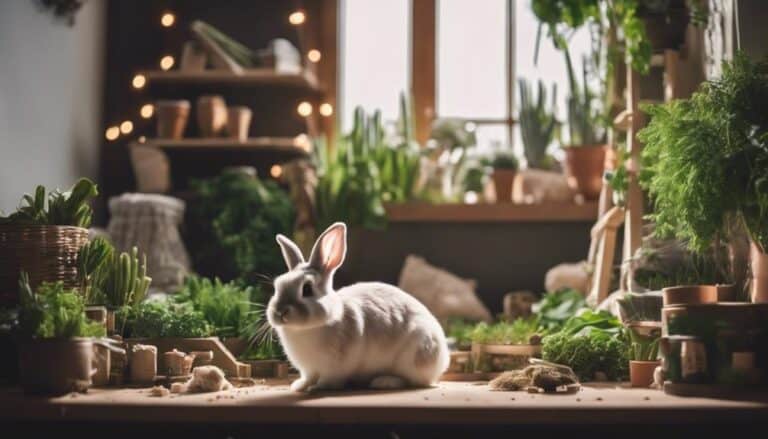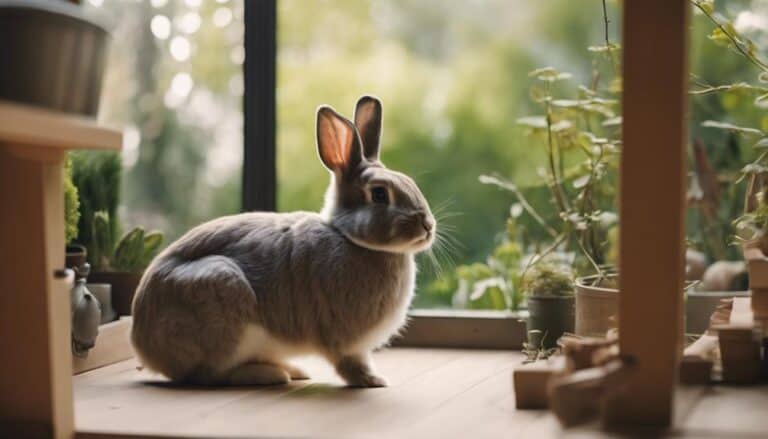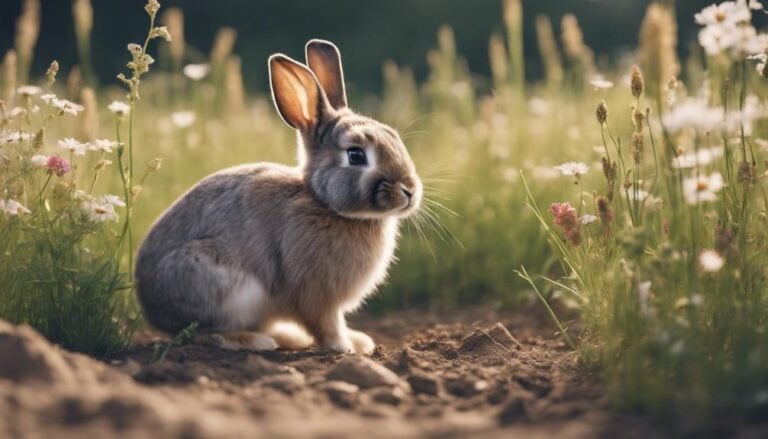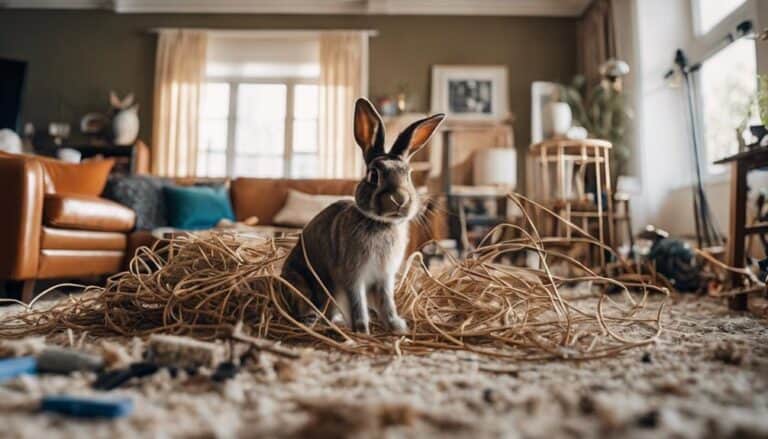Have you ever considered how sustainable materials can positively impact the well-being of your bunny?
The choice of materials for your furry friend's habitat goes beyond mere aesthetics. It is about creating a safe and healthy environment that aligns with your values.
By exploring the benefits of sustainable options for bunny homes, you can discover a world of possibilities that not only benefit your pet but also contribute to a greener future.
Contents
- 1 Key Takeaways
- 2 Benefits of Sustainable Bunny Habitats
- 3 Eco-Friendly Materials for Bunny Homes
- 4 Importance of Green Bunny Environments
- 5 Sustainable Choices for Bunny Dwellings
- 6 Enhancing Bunny Wellness With Eco-Design
- 7 Frequently Asked Questions
- 8 What are the Benefits of Using Sustainable Materials for Bunny Homes?
- 9 Conclusion
Key Takeaways
- Enhance rabbit well-being with eco-friendly materials and practices
- Minimize environmental impact by choosing sustainable options
- Provide a safe and comfortable living space for pet rabbits
- Support a greener lifestyle while prioritizing ecological needs
Benefits of Sustainable Bunny Habitats
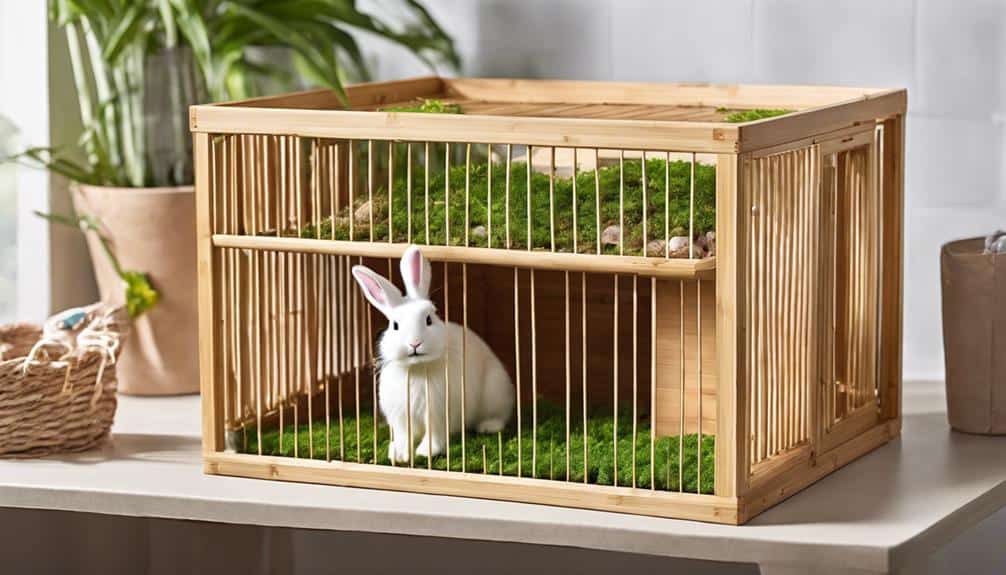
Using sustainable materials in bunny homes greatly reduces the environmental impact of rabbit habitats while promoting eco-friendly practices. By opting for natural and biodegradable materials in your rabbit's living space, you aren't only providing a healthier environment for your pet but also contributing to sustainable living practices. Rabbits thrive on a natural diet, and utilizing sustainable materials aligns with their ecological needs. Choosing eco-friendly options for your bunny's habitat minimizes waste and supports a greener lifestyle for both you and your pet.
Creating a sustainable bunny habitat goes beyond just providing a comfortable space for your rabbit; it also reflects your commitment to ethical and responsible pet ownership. Sustainable materials help decrease carbon footprints and promote a more eco-conscious way of caring for your furry companion. By investing in eco-friendly materials for your rabbit's home, you aren't only benefiting your pet's well-being but also making a positive impact on the environment.
Eco-Friendly Materials for Bunny Homes
Incorporating eco-friendly materials into bunny homes not only benefits the environment but also enhances the well-being of pet rabbits through natural and biodegradable options like hay and straw. Rabbits thrive on a diet that includes fresh vegetables, and providing them with a habitat that aligns with their natural instincts can contribute to their overall health. When considering materials for bunny homes, opt for natural and biodegradable choices that mimic the rabbits' natural environment. Shelter or rescue organizations often recommend hay and straw as ideal bedding options, as they aren't only essential but also provide a cozy and comfortable shelter for the bunnies.
Additionally, offering rabbits chew toys made from natural materials can keep them mentally stimulated and physically active. Ensuring that bunny homes have access to natural light is also vital for their well-being. By choosing sustainable materials for bunny homes, you aren't only supporting a green lifestyle but also providing a healthier and more enriching environment for your beloved pets.
Importance of Green Bunny Environments
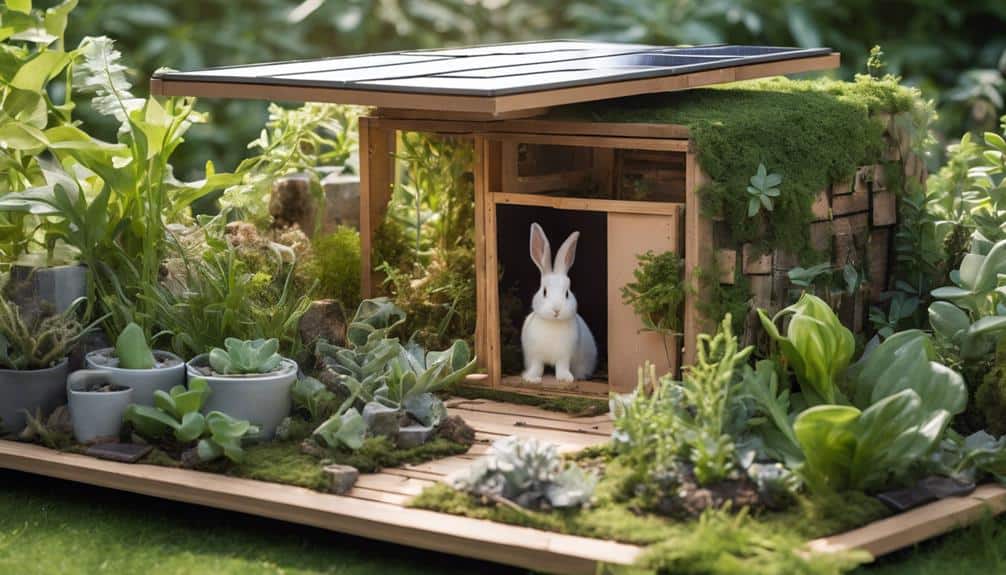
By creating green environments for your bunnies, you prioritize their well-being and contribute to a more sustainable lifestyle. When you choose sustainable materials for your bunny's home, you not only provide a comfortable space for your furry friends but also make a positive impact on the environment. Here are some reasons why green bunny environments are essential:
- Natural Bedding: Opting for natural, eco-friendly bedding like hay or straw creates a cozy and safe environment for your rabbits.
- Sustainable Practices: Using recycled paper bedding or other sustainable materials minimizes waste and supports eco-friendly practices within your bunny's living space.
- Healthier Habitat: Green bunny environments with biodegradable bedding enhance the overall well-being and comfort of your rabbits.
- Reduced Ecological Footprint: By choosing sustainable options for your bunny's home, you help minimize the environmental impact of pet care and promote a more natural habitat for your rabbits.
Sustainable Choices for Bunny Dwellings
To create sustainable bunny dwellings, prioritize choosing environmentally friendly materials for their habitats. Sustainable bedding options like recycled paper, hay, or straw play an important role in reducing waste and promoting eco-friendly practices within rabbit homes. These natural and biodegradable choices not only minimize the environmental impact but also provide a comfortable living environment for your bunnies. By opting for eco-friendly practices and materials, you can greatly reduce the ecological footprint associated with pet care while aligning with values that support a greener lifestyle.
Integrating sustainable bedding into bunny dwellings not only benefits the environment but also enhances the overall well-being of your rabbits. These materials contribute to a healthier living space, free from harmful chemicals often found in traditional bedding options. Making the switch to greener alternatives is a simple yet impactful way to create a more sustainable and eco-conscious home for your beloved pets.
Enhancing Bunny Wellness With Eco-Design
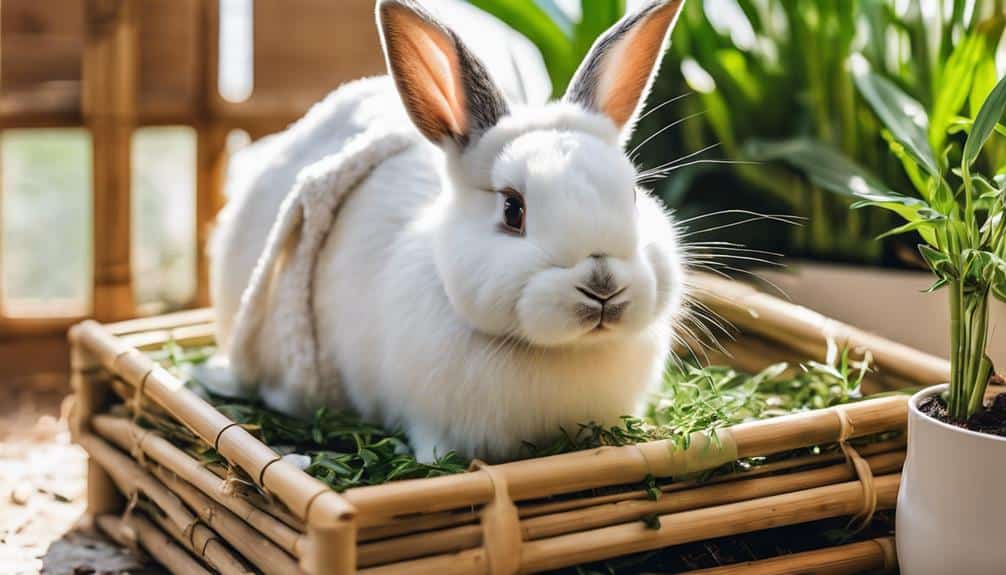
Enhance bunny wellness through strategic eco-design choices that prioritize sustainability and promote a healthier living environment for your rabbits.
- Sustainable materials: Opting for sustainable materials in bunny homes reduces exposure to harmful chemicals and toxins, contributing to a healthier environment for your furry friends.
- Eco-friendly design: Incorporating eco-friendly design choices guarantees a safe and non-toxic living space for your rabbits, supporting their overall wellness.
- Reduced carbon footprint: Using materials like bamboo, recycled plastics, or natural fibers minimizes the carbon footprint of bunny homes, aligning with eco-conscious values.
- Improved air quality: Eco-design elements such as non-toxic paints and finishes enhance air quality in bunny habitats, reducing respiratory issues and promoting a greener lifestyle that fosters environmental stewardship.
Frequently Asked Questions
Why Are Bunnies Eco Friendly?
Eco friendly bunnies are environmentally conscious pets. Their sustainable habitats, as green furry friends, showcase how nature-loving rabbits make earth-friendly companions. They embody an eco-conscious mindset, fostering a sustainable lifestyle with empathy and respect for life.
What Are Important Considerations in Rabbit Housing?
You need to contemplate space, materials, ventilation, cleaning, enrichment, temperature, and safety for rabbit housing. Prioritize their well-being by ensuring adequate space, proper ventilation, easy cleaning, engaging enrichment, and secure shelter.
Why Do Rabbits Need a Suitable Environment?
Rabbits need a suitable environment for health benefits, behavioral needs, space requirements, natural instincts, social interactions, mental stimulation, and physical activity. Providing these elements guarantees your bunnies thrive in a safe and enriching space.
What Is the Best Environment for a Bunny?
In creating the best environment for a bunny, consider replicating their natural habitat indoors or in an outdoor enclosure. Guarantee safe surroundings, comfortable bedding, temperature control, and enrichment activities for a healthy, happy bunny.
What are the Benefits of Using Sustainable Materials for Bunny Homes?
Using sustainable materials for cozy bunny homes has numerous benefits. Not only are these materials environmentally friendly, but they also provide a safe and healthy living environment for bunnies. Additionally, sustainable materials can be long-lasting, saving money in the long run and reducing the need for frequent replacements.
Conclusion
You've made the right choice by opting for sustainable materials for your bunny's home. By choosing eco-friendly options, you're not only providing a healthier environment for your furry friend but also reducing your carbon footprint.
Keep up the good work in creating a green and sustainable living space for your beloved bunny – Mother Earth thanks you, and so does your fluffy companion!

